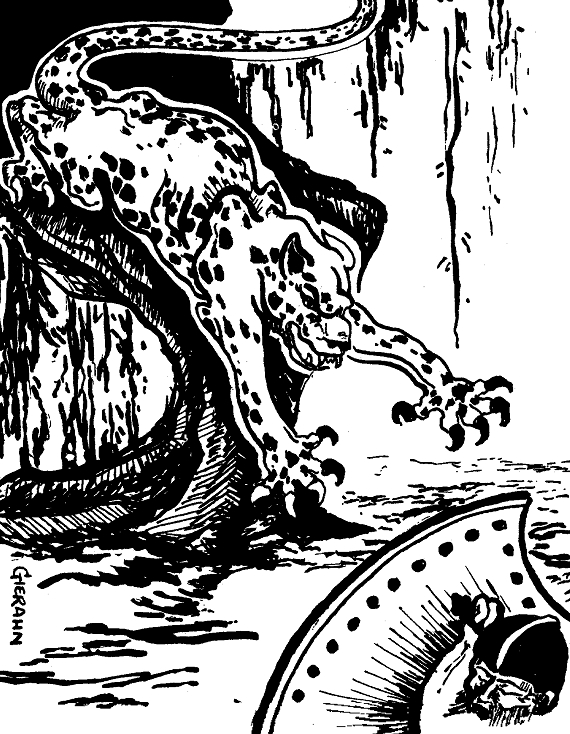| - | Dmg. (s-m/l) | Lng. | Spc. req. |
Spd. fat. |
| Hammer1 | 1-4/1-3 | c. 1 1/2' | 2' | 4 |
| Macahuitl (as sword)2 | 2-8/2-165 | c.3 1/2' | 4' | 6 |
| Macahuitl (as club)3 | 1-4/1-25 | c. 3 1/2' | 4' | 5 |
| Spear4 | 1-6/2-86 | as per AD&D | as per AD&D | as per AD&D |
| Tlacochtli4 | 1-8/1-87 | as per spear | as per spear | as per spear |

| Creature type | Dice roll |
| Ant, giant | 01-02 |
| Ape | 03-05 |
| Bear, black | 06-09 |
| Beetle rhinoceros | 10-12 |
| Centipede, giant | 13-16 |
| Coatl (see note) | 17-19 |
| Herd animal | 20-25 |
| Jaguar | 26-47 |
| Lycanthrope, werejaguar | 48-52 |
| Men, tribesmen (Mechica) | 53-56 |
| Men, tribesmen (Sapotec) | 57-60 |
| Scorpion, giant | 61-64 |
| Snake, constricting | 65-70 <MM> |
| Snake, poisonous | 71-74 <MM> |
| Snake, spitting | 75-76 <MM> |
| Spider, giant | 77-80 |
| Spider, huge | 81-86 |
| Toad, giant | 87-94 |
| Toad, giant poisonous | 95-00 |
| 1 | 2 | 3 | 4 | 5 |
| 6 | 7 | 8 | 9 | Mechica |
| 1 | 2 | 3 | 4 | 5 |
| 6 | 7 | 8 | 9 | 10 |
| 11 | 12 | 13 | 14 | 15 |
| 16 | 17 | 18 | 18a | 18b |
| 18c | - | - | - | Mechica |